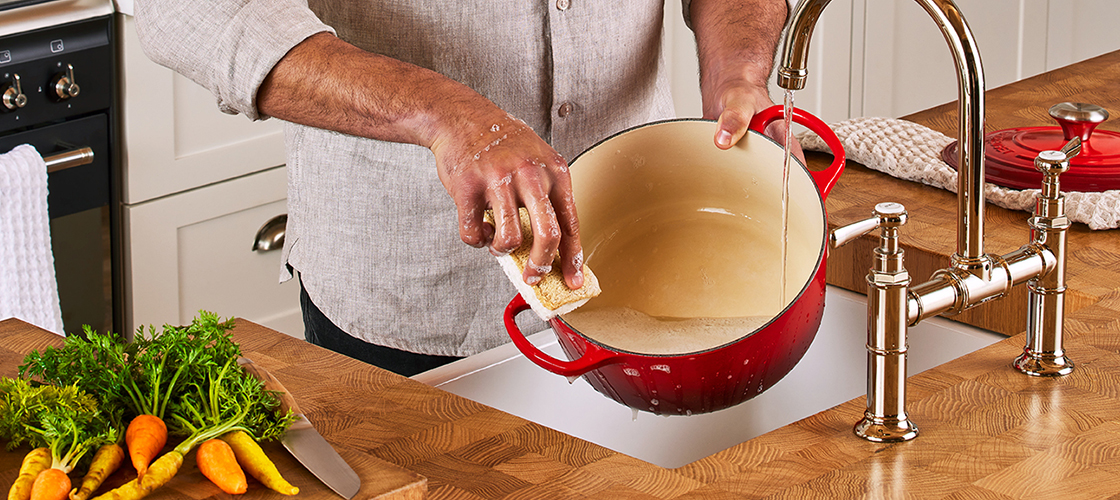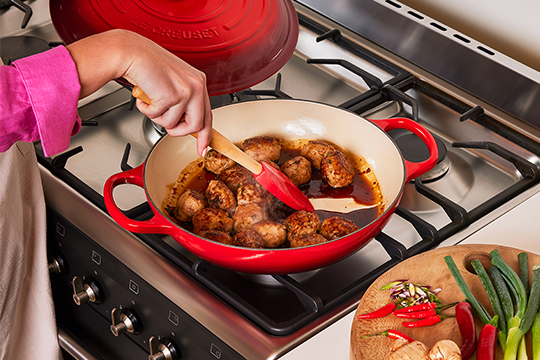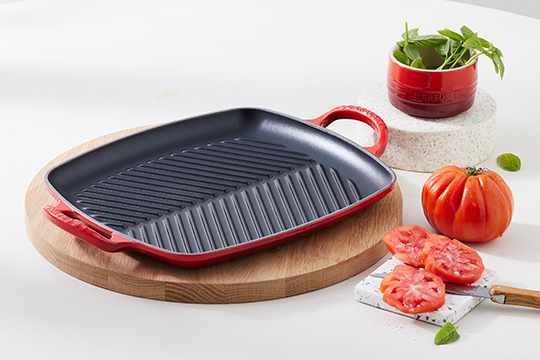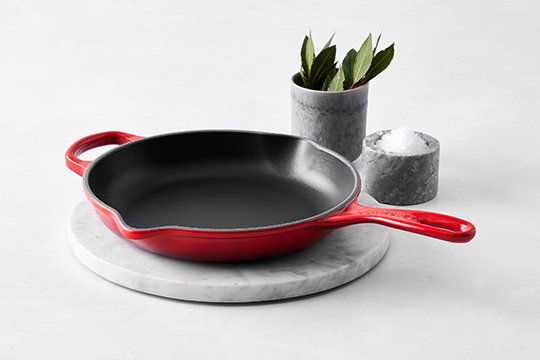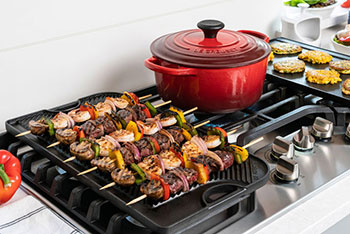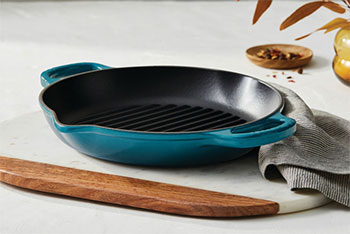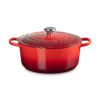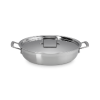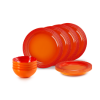You might have noticed that Le Creuset has two different options when it comes to the interiors of our enamelled cast iron cookware, and we’re often asked about the differences between the two. The most common is our light-coloured sand interior enamel, while the other is our matte black satin enamel. While they are both enamel coatings, they each have been designed for a specific function and use. Read on to learn the similarities and differences between sand and black satin enamel.
Shop NowAbout Our Sand Interior Enamel
Most people are familiar with our light-coloured sand interiors, since this is what you will find inside our iconic best-selling casseroles. You will also find it in most of our other enamelled cast iron cookware as well, and the glossy sand-coloured finish is in fact an enamel coating – which is a type of glass. The coating serves several purposes, but most importantly, does not need to be pre-seasoned and makes our enamelled cast iron cookware easier to use and maintain.
While you’re cooking, the light-coloured sand enamel allows for easy monitoring of the cooking process, and is particularly well suited for moist cooking methods. You can easily see the brown bits, also known as the fond, on the bottom of the broad cooking surface of the pot and keep watch so that they don’t burn. The smooth, almost glossy finish of the sand enamel also means food is less likely to stick to the pot or pan, and easily releases to make cleanup a breeze.
One of the many benefits of using an enamel coating is that glass is inert, which means it won’t absorb odours or flavours from your food. It is also great for storing leftovers and won’t react with acidic foods like tomatoes and citrus. Over time, though, you might find that the sand enamel can become stained or discoloured via the cooking process. However, these stains are not permanent and clean up easily with the help of our Cast Iron Cookware Cleaner or even readily available baking soda.
About Our Black Satin Interior Enamel
Our black satin enamel is found on the interior of our best-selling Signature Skillets and fan favourite Grill Pans. With a matte black finish and slightly coarser texture than our sand enamel, many think this surface is actually raw cast iron. But it is in fact our innovative enamel coating applied to the cast iron to create a surface that is much easier to use and clean than traditional cast iron.
Similar to our sand enamel, the black satin enamel requires no pre-seasoning. It has also been specially designed for grilling, searing and other dry cooking methods, and results in a nice brown caramelised crust on your food. Note that you should still use medium to medium-high heat settings when cooking with our black satin enamelled cast iron cookware.
The surface of the pan will develop a beneficial patina that enhances cooking performance, and creates a surface that becomes more nonstick over time – just like traditional cast iron. This patina is part of the natural cooking process, and reduces sticking and the need for surface oiling. While easier to maintain than cast iron, you still want to be careful to not scrub off the patina when you clean the pan.


